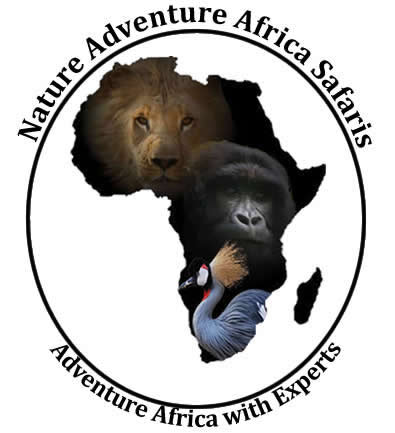Semuliki National Park is located in western Uganda in the district of Bundibugyo lying on Uganda’s border with DR Congo. Semuliki National Park borders Lake Albert in north and the Rwenzori Mountains in the southeast. Semuliki and Lamia Rivers also lie within the Parks boundaries.
Semuliki started as a forest reserve in 1932 and was made a national park in 1993 mainly to curb deforestation. The forests in Semuliki are an extension of the great Ituri Forest that stretches all the way to the River Zaire, in DR Congo.
This extension implies that many of the tree and animal species found in Central Africa can be found in the park. The conditions in Semuliki are completely different from any other national park in Uganda, Kenya or Tanzania but instead similar to those in central Africa.
Attractions in Semuliki:
This is Uganda’s finest birding destination with over 400 bird species. About 67 percent of the species are forest birds like the Blue-headed Crested Flycatcher, Capuchin Babbler , Dwarf Honey guide, Forest Ground Thrush, orange weaver, Purple-breasted Sunbird, Sassi’s Olive Greenbul and White-tailed Hornbill.
Since the forest attaches with that of DR Congo, some species unique to central Africa like the Black-wattled Hornbill, Congo Serpent Eagle, Long-tailed Hawk, Lyre-tailed Honey guide and Nkulengu Rail can also be found in the park.
The Park is really the ‘true birder’s haven’ and for every serious birder this is the best spot not only in Uganda but Africa entirely.
Besides being a top class birding site in Africa and Uganda, Semuliki also inhabits numerous pleasing attractions such as the Sempaya hot springs, mammals, butterflies, various beautiful tree species, reptiles, amphibians and very many others.
Among the some of the animals that may be spotted in this PPark include, bush pigs, civets, bay duikers, Beecroft’s Anomalure, forest buffaloes, flying squirrels, bush babies, Dwarf Antelope, elephants, fruit bats, Fire-footed Rope squirrel, hippos, leopards, Little collard fruit Bat, mona monkeys, pygmy flying squirrel, Red-legged Sun Squirrel, Sitatunga, target rats, water chevrotains, water bucks, warthogs, Uganda Kob, White-bellied Duiker and the Zenker’s Flying Mouse, among others.
The Park resides 8 primate species including blue monkeys, chimpanzees, De Brazza’s Monkeys, Guereza Colobus, vervet monkeys and olive baboons plus pattos and galagos which are nocturnal, and almost 300 butterflies like the charaxes and forest swallowstails.
The two Sempaya hot springs are absolutely one of the Park’s chief attractions and tourists are more amazed by the local stories about the hot springs’ formation than the scientific explanation.
These two hot springs include a male known as Bintente and then a female one which is claimed to be called Nyasimbi. Boiling geyser gushes out steam and bubbling water several meters high and can be seen more than 1 kilometer away of which the water gushing out is hot enough even to boil eggs and plantains.
Thrilling Cultural Encounters:
The Park is enclosed by four indigenous tribes that tourists will interact with on their cultural encounters. Visitors can choose to visit any of the four tribes living in the edges of the park.
The Batwa pygmies are hunters and forest gatherers while the Bakonjo and Bamba grow crops (rice, matooke/bananas, potatoes and cocoa) on the slopes of the Rwenzori Mountains. The Batuku live in the northern extremities of the park as pastoralists and it is always an unforgettable experience interacting with any of these four tribes.
Tourism and modernization is changing the lives of these tribes, specifically the Batwa. The Batwa used to live freely in the forests of Rwanda, Uganda and DR Congo but have been relocated to areas outside the national parks ever since the inauguration of the national parks in their respective homes.
Some of the Batwa in Semuliki National Park have been resettled in an area near Ntandi with the help of a Christian organization known as ADRA (Adventist Development Relief Agency) but with little success as they still find themselves longing for their old way of life in the forest.
Some of the Batwa with support from the Uganda Wildlife Authority showcase their cultural heritage to visitors through dance, storytelling and other demonstrations, which is all breathtaking and memorable!
